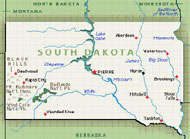| 1.0 | TRAVEL AND TRAFFIC MANAGEMENT |
| 1.2.0 | ITS shall include an En-Route Driver Information (DI) function. Driver Information provides vehicle drivers with information, while en-route, which will allow alternative routes to be chosen for their destination. Driver Information consists of two major functions, which are, (1) Driver Advisory and (2) In-vehicle Signing. The potential decrease in traffic may also provide benefits in highway safety, reduced air pollution, and decreased congestion. |
| 1.2.1 | DI shall be implemented in a manner that is beneficial to the transportation system and the public. |
| 1.2.1.1 | DI shall be implemented in a manner that helps improve highway safety. |
| 1.2.1.2 | DI shall be implemented in a manner that helps reduce air pollution. |
| 1.2.1.3 | DI shall be implemented in a manner that helps decrease congestion. |
| 1.2.1.5 | DI shall include a driver advisory capability and an in-vehicle signing capability. |
| 1.2.3 | DI shall provide an In-vehicle Signing capability. |
| 1.2.3.1 | The DI In-vehicle Signing function shall include a short term capability to serve the more immediate needs of travelers. |
| 1.2.3.1.1 | The short term In-vehicle Signing function shall include the capability to provide assistance to individuals with impaired vision. |
| 1.2.3.1.2 | The short term In-vehicle Signing function shall include the capability to provide assistance to individuals needing local guidance in areas that the driver is unfamiliar with (e.g., airports, resort areas, tourist attractions). |
| 1.2.3.1.3 | The short term In-vehicle Signing function shall include the capability to provide assistance to individuals in areas that frequently have conditions of poor visibility, high winds, extreme temperature, and falling rocks. |
| 1.2.3.1.4 | The short term In-vehicle Signing function shall be implemented in a manner that augments existing signs. |
| 1.2.3.1.4.1 | The short term In-vehicle Signing function shall augment control signs (e.g., stop signs). |
| 1.2.3.1.4.2 | The short term In-vehicle Signing function shall augment warning signs (e.g., slow signs). |
| 1.2.3.1.5 | The short term In-vehicle Signing function shall provide a user interface that allows travelers to access its capabilities. |
| 1.2.3.2 | The DI In-vehicle Signing function shall include a long term capability to serve more of the traveler's needs. |
| 1.2.3.2.2 | The long term In-vehicle Signing function shall provide the capability to customize warnings. |
| 1.2.3.2.2.1 | The customized warnings function shall provide the capability to control the contents of warning messages to the extant environmental conditions. |
| 1.2.3.2.4 | The In-vehicle Signing function shall provide travelers with information on road conditions. |
| 1.2.3.2.5 | The In-vehicle Signing function shall provide travelers with precautionary reminder messages. |
| 1.5.0 | ITS shall include a Traveler Services Information (TSI) function. Traveler Services Information provides travelers with service and facility data for the purpose of assisting prior to embarking on a trip or after the traveler is underway. The functions which are included in this capability are Information Receipt and Information Access. This will provide the traveler with a "yellow pages" type of capability. |
| 1.5.2 | TSI shall include an Information Access function that allows travelers to access the available information. |
| 1.5.2.1 | Information Access shall provide the capability for travelers to request and receive general information about the local area. |
| 1.5.2.2 | Information Access shall provide the capability for travelers and centers to request and receive information about the location of facilities and the quality of specific services provided in an area to include but, not be limited to, the following: |
| 1.5.2.3 | Information Access shall provide the capability for travelers to request specific actions of area service providers to include, but not be limited to: |
| 1.8 | TRAVEL DEMAND MANAGEMENT |
| 1.8.1 | TDM shall include a communications function. |
| 1.8.1.6 | The communications function shall include the capability for two-way communications with other ITS user services including, but not limited to, the following: |
| 1.8.1.6(b) | En-Route Transit Advisory. |
| 2.2.1.2.2 | User Interface shall provide the capability for users to access travel related information at mobile locations. |
| 2.2.1.2.2.1 | Mobile Location user interfaces shall provide the capability for users, either one passenger at a time or to a group environment, to access travel related information while on board transit vehicles. |
| 2.2.1.2.2.2 | Mobile user interfaces shall provide the capability for users to access travel related information while in transit vehicles through the use of variable message signs. |
| 2.2.1.2.2.3 | Mobile user interfaces shall provide the capability for users to access travel related information via personal portable devices. |
| 2.2.1.2.2.4 | Mobile user interfaces shall include the capability to provide audible messages to the on-board users. |
| 3.0 | ELECTRONIC PAYMENT |
| 3.1.0 | ITS shall include an Electronic Payment capability. Electronic Payment Services allows travelers to pay for transportation services by electronic means. Four functions are provided, which are, (1) Electronic Toll Collection, (2) Electronic Fare Collection, (3) Electronic Parking Payment, and (4) Electronic Payment Services Integration. |
| 3.1.2 | Electronic Payment shall include an Electronic Fare Collection (EFC) capability. |
| 3.1.2.3 | EFC shall be capable of identifying voided and/or invalid payment media. |
| | |












